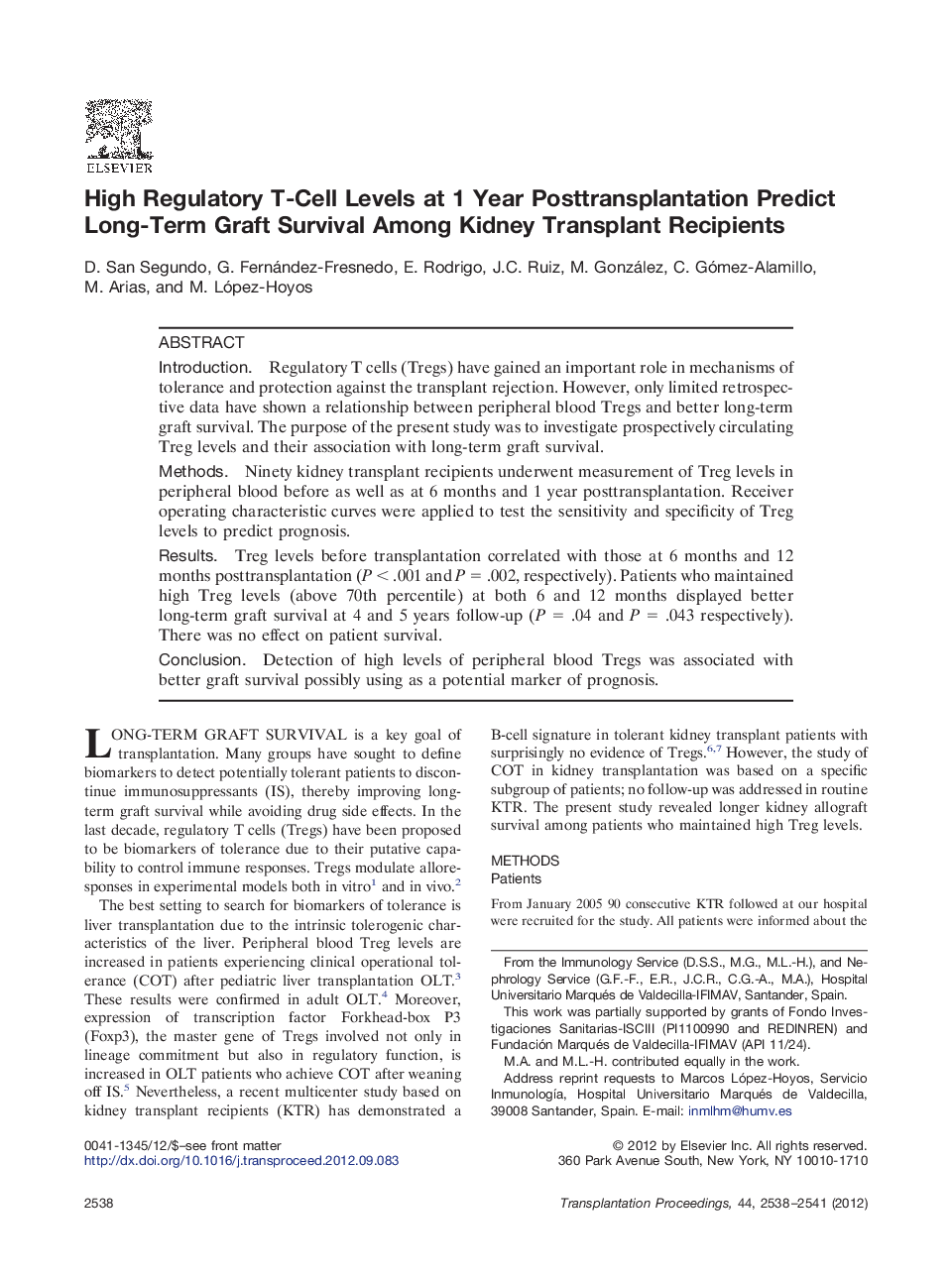| Article ID | Journal | Published Year | Pages | File Type |
|---|---|---|---|---|
| 4256249 | Transplantation Proceedings | 2012 | 4 Pages |
IntroductionRegulatory T cells (Tregs) have gained an important role in mechanisms of tolerance and protection against the transplant rejection. However, only limited retrospective data have shown a relationship between peripheral blood Tregs and better long-term graft survival. The purpose of the present study was to investigate prospectively circulating Treg levels and their association with long-term graft survival.MethodsNinety kidney transplant recipients underwent measurement of Treg levels in peripheral blood before as well as at 6 months and 1 year posttransplantation. Receiver operating characteristic curves were applied to test the sensitivity and specificity of Treg levels to predict prognosis.ResultsTreg levels before transplantation correlated with those at 6 months and 12 months posttransplantation (P < .001 and P = .002, respectively). Patients who maintained high Treg levels (above 70th percentile) at both 6 and 12 months displayed better long-term graft survival at 4 and 5 years follow-up (P = .04 and P = .043 respectively). There was no effect on patient survival.ConclusionDetection of high levels of peripheral blood Tregs was associated with better graft survival possibly using as a potential marker of prognosis.
